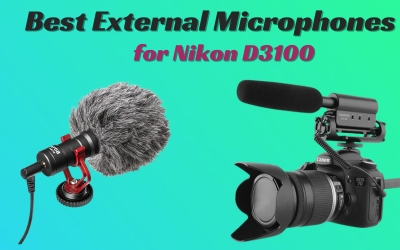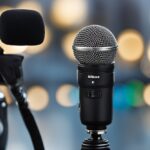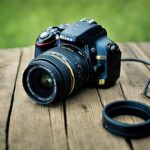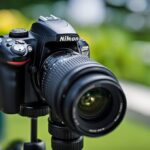Are you struggling to get the best sound quality out of your condenser microphone? Knowing how to speak into a condenser microphone correctly is essential for any podcaster, musician, or voice-over artist. Whether you’re recording a podcast, singing your heart out, or narrating an audiobook, understanding how to use your microphone can make a significant difference in the final sound quality.
In this article, you’ll learn how to set up your microphone, how to speak into a condenser microphone correctly, and a few post-recording tips to make sure your audio is ready to go. With these tips, you’ll be able to get the most out of your condenser microphone and take your recordings to the next level. So, let’s get started!
Key Takeaways
- Proper microphone setup is crucial for getting the best sound quality.
- Speaking into a condenser microphone requires proper technique and positioning.
- Post-recording tips can help you enhance your audio quality even further.
Table of Contents
ToggleHow to Set Up Your Microphone?
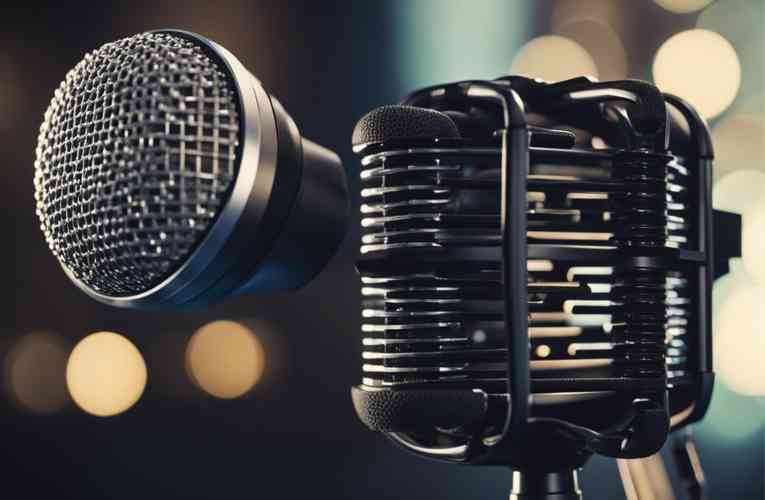
Setting up your condenser microphone properly is crucial to getting the best audio quality possible. In this section, we’ll go over the steps to set up your microphone effectively.
Optimal Placement
The first step in setting up your microphone is to find the optimal placement. This means finding the best spot for your microphone to capture your voice without picking up unwanted background noise. Ideally, you want to position the microphone close to your mouth, but not so close that it picks up every breath and pop.
A good starting point is to position the microphone about 6 to 12 inches away from your mouth. Experiment with different distances until you find the sweet spot.
Gain Staging
The next step is to set the gain on your microphone. Gain staging is the process of adjusting the volume of your microphone to ensure that your audio is not too quiet or too loud. The goal is to set the gain so that your voice is recorded at an optimal level without clipping or distorting.
You can adjust the gain on your microphone by using the gain knob or slider on your audio interface. Start with a low gain setting and gradually increase it until you reach the desired volume.
Use of Pop Filters
Finally, consider using a pop filter. Pop filters are designed to reduce the impact of plosive sounds like “p” and “b” that can cause unwanted distortion in your audio. A pop filter is a simple accessory that you can attach to your microphone to reduce the impact of these sounds.
Place the pop filter between your mouth and the microphone, and adjust it until it’s in the optimal position.
Related Posts:
How to Speak into a Condenser Microphone?

If you are new to using a condenser microphone, it is essential to know how to speak into it correctly. Speaking into a condenser microphone is not as simple as speaking into a regular microphone. Here are some tips to help you speak into a condenser microphone correctly:
Proper Distance and Angle
The distance and angle between your mouth and the microphone are crucial when speaking into a condenser microphone. Generally, you should speak about six inches away from the microphone. If you get too close to the microphone, you risk overloading the microphone and creating unwanted distortion.
On the other hand, if you are too far away from the microphone, your voice will sound distant and thin.
Make sure to position the microphone at a 45-degree angle to your mouth. This angle helps reduce plosives and sibilance, which are harsh sounds that can damage the microphone.
Controlling Sibilance and Plosives
Sibilance and plosives are harsh sounds that can damage the microphone and ruin your recording. Sibilance is the hissing sound that occurs when you say words with “s” or “sh” sounds.
Plosives are the popping sounds that occur when you say words with “p” or “b” sounds.
To control sibilance and plosives, you can use a pop filter. A pop filter is a device that you place in front of the microphone to reduce the harsh sounds. You can also try speaking slightly to the side of the microphone to reduce the impact of these sounds.
Modulating Voice and Projection
When speaking into a condenser microphone, it is essential to modulate your voice and projection. Modulating your voice means changing the tone, pitch, and volume of your voice to create a more dynamic recording.
Projection means speaking with enough volume to be heard clearly without overloading the microphone.
To modulate your voice, try changing the volume and tone of your voice as you speak. You can also try speaking louder or softer to create a more dynamic recording.
To project your voice, speak clearly and with enough volume to be heard without shouting. If you are recording in a noisy environment, you may need to speak louder to be heard clearly.
- Learn the Process of Connecting a Condenser Microphone to Your PC
- Do condenser microphones deteriorate with age
Post-Recording Tips
Congratulations, you have recorded your audio with a condenser microphone! But your work is not done yet. You still need to edit and mix your audio, reduce any noise, and finalize the audio. Here are some tips to help you with these post-recording tasks.
Editing and Mixing
Once you have recorded your audio, you need to edit and mix it to make it sound polished and professional. You can use a digital audio workstation (DAW) like Audacity, GarageBand, or Logic Pro to edit and mix your audio.
Here are some tips for editing and mixing your audio:
- Remove any unwanted noises or pauses.
- Adjust the volume levels of your audio tracks.
- Add effects like reverb, EQ, or compression to enhance the sound quality.
- Use automation to adjust the volume levels or effects over time.
Noise Reduction
Sometimes, your audio may have unwanted background noise like hiss, hum, or buzz. This can be distracting and reduce the quality of your audio. You can use noise reduction tools to remove or reduce this noise.
Here are some tips for noise reduction:
- Use a noise gate to remove any low-level noise when you are not speaking.
- Use a noise reduction plugin to remove any constant noise like hiss or hum.
- Use a spectral editor to remove any intermittent noise like clicks or pops.
Finalizing the Audio
Once you have edited and mixed your audio and reduced any noise, you need to finalize the audio for distribution. You can use a mastering tool like Ozone, T-RackS, or LANDR to finalize your audio.
Here are some tips for finalizing your audio:
- Adjust the overall EQ and compression to make the audio sound balanced and consistent.
- Use a limiter to prevent any clipping or distortion.
- Add metadata like artist name, track title, and album art to your audio files.
By following these post-recording tips, you can make your audio sound polished and professional.
Conclusion
In conclusion, speaking into a condenser microphone requires a bit of practice and technique, but with the right approach, you can achieve professional-quality recordings. Remember to position the microphone correctly, use proper mic technique, and adjust your speaking volume and distance to get the best results.
Additionally, using a pop filter can help reduce plosives and sibilance, while adjusting the EQ settings can enhance the clarity and tone of your voice. Experiment with different microphone placements and settings until you find the optimal setup for your needs.
Overall, speaking into a condenser microphone is a skill that can be mastered with patience and persistence. With the tips and techniques outlined in this guide, you can take your recordings to the next level and achieve the professional sound quality you desire.
Frequently Asked Questions
What is the optimal distance between a condenser microphone and your mouth?
The optimal distance between a condenser microphone and your mouth is approximately 6 to 12 inches, as this is the range where the microphone can capture the nuances of your vocal performances while also minimizing the risk of plosives and sibilance. However, the exact distance can vary depending on the type of condenser microphone you are using, your recording environment, and your vocal style.
Can you explain proper cardioid microphone placement for recording vocals?
Proper cardioid microphone placement for recording vocals involves positioning the microphone so that the diaphragm faces your mouth and the back of the microphone faces away from any unwanted noise sources. The microphone should be placed at a 45-degree angle to your mouth, with the capsule pointed towards the center of your mouth. This technique helps to minimize background noise and capture your voice with clarity and accuracy.
What are some important microphone techniques for capturing clear audio?
Some important microphone techniques for capturing clear audio include using a pop filter to minimize plosives, adjusting the microphone gain to achieve the optimal recording level, and using a shock mount to reduce handling noise. Additionally, it is important to position the microphone correctly, maintain a consistent distance from the microphone, and speak clearly and directly into the microphone.
In what way should a condenser microphone be positioned for streaming?
A condenser microphone should be positioned in a way that allows it to capture your voice with clarity and accuracy while minimizing background noise. For streaming, it is recommended to position the microphone on a boom arm or stand, with the diaphragm facing your mouth at a 45-degree angle. Additionally, it is important to adjust the gain and volume levels to achieve the optimal recording level.
Is it possible to use a condenser microphone for singing, and if so, how?
Yes, it is possible to use a condenser microphone for singing. To achieve the best results, it is recommended to position the microphone at a distance of 6 to 12 inches from your mouth and adjust the gain and volume levels to achieve the optimal recording level. Additionally, it is important to use proper microphone technique, such as maintaining a consistent distance from the microphone and speaking directly into the microphone.
What are common mistakes to avoid when using a condenser microphone?
Common mistakes to avoid when using a condenser microphone include speaking too closely to the microphone, using the wrong polar pattern for your recording environment, and failing to adjust the gain and volume levels properly. Additionally, it is important to avoid touching the microphone or moving it around during recording, as this can cause unwanted noise and affect the quality of your recording.

